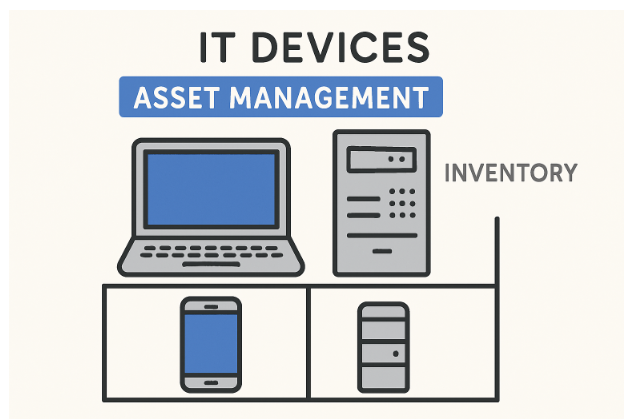Key Takeaways
- Strategic IT asset management extends the life of technology and reduces the total cost of ownership.
- Adopting best practices supports sustainability and improves budgeting.
- Regular reviews, clear policies, and employee involvement drive IT asset efficiency.
- Real-world data and industry insights are critical for informed decision-making.
The Value of Planning IT Asset Longevity
With technology playing a vital role in everyday business, organizations need a proactive approach to managing their IT investments. Ignoring the lifecycle of laptops, servers, and software often leads to unplanned expenses, operational delays, and security vulnerabilities. Proactively managing these technology assets through thoughtful planning and established procedures maximizes value and minimizes both risk and disruption.
Implementing effective IT asset lifecycle management is proven to lower the total cost of ownership and support long-term business resilience. According to IBM’s IT asset management overview, structured asset planning reduces IT costs, enhances vendor negotiations, and aligns technology with business objectives. Extending the useful life of assets translates directly into bottom-line savings while supporting a stable and adaptable IT environment.
Assessing Your IT Environment: First Steps
The first step toward a sustainable, cost-effective IT landscape is a thorough assessment of assets. Create a detailed inventory of hardware, software licenses, and digital resources, noting warranty statuses, service agreements, and condition. This highlights underused equipment for potential retirement or reassignment and prevents overspending. Regular asset reviews and data analytics enable smarter decisions on upgrades, reassignments, and cybersecurity gaps. Audits reveal unused devices, opportunities to consolidate, and security issues. Taking IT inventory and developing a full asset register can be streamlined with the right support. For many businesses, outsourcing to a provider specializing in Managed IT services delivers expertise and efficiency, helping you identify savings, stay compliant, and ultimately increase productivity. This approach allows companies to focus on their core operations while experts handle their IT assets. Additionally, it can provide valuable insights into asset lifecycle management and help prevent costly technology failures.
Establishing Clear Lifecycle Policies
Well-defined lifecycle policies are the backbone of successful IT asset management. These guidelines clarify when devices should be replaced or upgraded, taking into account security, performance, and productivity. For instance, some organizations set a policy for refreshing laptops every four years and replacing servers every five years, while others link replacements to performance benchmarks or evolving security requirements. Clearly documented policies help IT teams plan, manage budgets, and avoid the disruption and risk associated with last-minute equipment failures.
Optimizing Disposal and Refresh Cycles
Disposing of outdated technology responsibly is as critical as acquiring it. Secure data erasure, environmentally responsible recycling, and managing end-of-life through buy-back programs or resale channels all contribute to comprehensive asset management. Data privacy regulations, such as GDPR and HIPAA, make proper disposal of equipment essential to avoid legal and reputational consequences. When selecting partners for disposal, choose certified recyclers with proven data sanitization processes.
Sustainable IT Practices
Sustainability is a growing imperative as the digital economy generates an unprecedented volume of electronic waste. According to a recent report by the World Economic Forum, global e-waste is projected to reach 74 million metric tons by 2030. Businesses can reduce their environmental impact by extending asset lifespans, refurbishing and repurposing equipment for secondary roles, and partnering exclusively with recyclers who are committed to eco-friendly practices.
Embracing sustainable IT practices not only conserves resources but also enhances an organization’s reputation and demonstrates tangible corporate social responsibility.
Challenges Businesses Face
Despite its benefits, effective IT asset lifecycle management can be a complex process. Common obstacles include incomplete inventories, lack of centralized asset visibility, “shadow IT” (unauthorized devices brought in by staff), and inconsistent adherence to policies. Successful programs require collaboration across IT, procurement, finance, and compliance. Training employees in asset hygiene and reinforcing procedures for device usage reduces security incidents and minimizes operational friction.
Preparing for Future Technologies
The technology landscape is constantly evolving. Cloud computing, artificial intelligence, and IoT devices continue to reshape business operations and asset strategies. Adaptable IT asset management processes enable organizations to respond efficiently to new opportunities and risks. Engaging key stakeholders in procurement decisions and forecasting future technology trends reduces investment waste and enhances scalability in a rapidly evolving environment. Staying current on regulatory mandates and technology innovations creates a foundation for both agility and security.
Conclusion
Strategic planning for IT asset longevity is crucial for maintaining cost control, ensuring operational reliability, ensuring regulatory compliance, and promoting environmental responsibility. By applying industry best practices—careful assessment, policy development, intelligent disposal, and sustainability—companies of all sizes can transform their technology investments into a competitive advantage.



